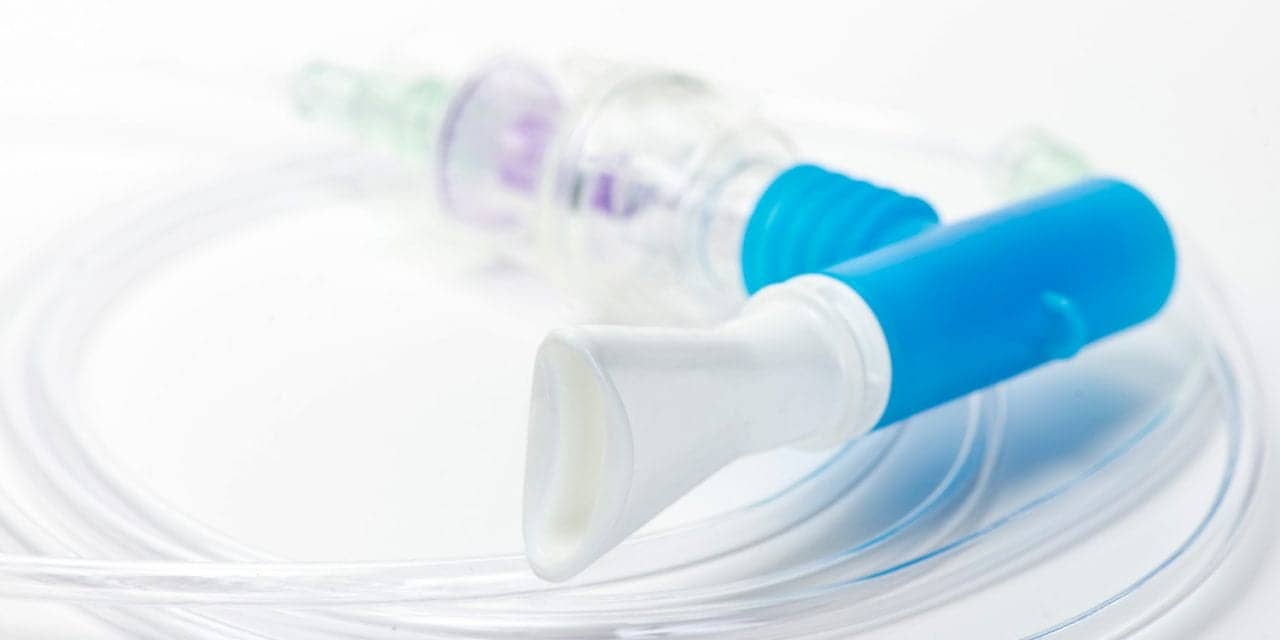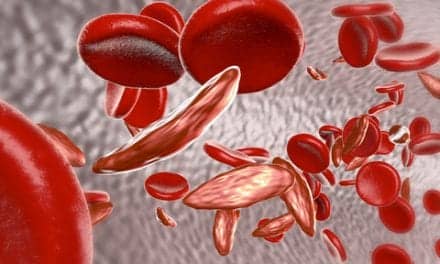For the past three decades, the marketplace has evolved to provide inhaled medications that are more effective and easier to use. Heightened awareness of environmental and infection-control concerns has spawned recommendations and regulations to address those issues.
By John A. Wolfe, RRT
Inhalation provides an excellent delivery route for the treatment of both pulmonary and nonpulmonary conditions. Delivering medications via inhalation generally requires smaller doses, offers a rapid onset of drug action, and reduces systemic effects, compared with other routes of administration. Nebulizers, metered dose inhalers (MDIs), and dry powder inhalers (DPIs) have been competing in the marketplace for many years, and each has found a niche. While nebulizers have evolved relatively independently of the drug formulations that they deliver, MDIs and DPIs have necessarily been developed for their specific pharmaceuticals.
Nebulizers are easy to use and adapt to a variety of challenges, making them a continued favorite in hospitals. The same nebulizer can be used to administer a variety of drugs, and can be adapted for use with a mouthpiece, adult or pediatric face mask, tracheostomy collar, T piece, or ventilator circuit. No matter which interface is in use, an RT will find a way to deliver aerosolized medications effectively via nebulizer.
Inhalers suit active lifestyles in people living with chronic pulmonary conditions. A child with asthma can accompany his grandfather with chronic obstructive pulmonary disease on a fishing trip far from the nearest gas source or electrical outlet. They can be assured of getting effective doses of the appropriate drugs at the times and places that suit them. The marketplace has been quick to respond to changes in consumer needs, government regulations, and pharmaceuticals. Manufacturers of MDIs state that their products are as effective as nebulizers when properly used, while nebulizer manufacturers emphasize that MDIs are often used incorrectly. Advocates of both technologies suggest that their approaches are superior, both in particulate deposition and for cost savings.1-4
The efficacy of inhaled medications may be affected by the patient’s age, severity of disease, and inhalation technique, as well as the specific pharmacological properties of the drug. Oropharyngeal deposition is a consistent confounding factor that continues to challenge each delivery modality. Cost, convenience, and ease of use can all affect patient compliance.
Nebulizer Characteristics
Handheld nebulizers have long provided a fast, efficient method of delivering medications directly to the airways of the lungs. Conventional nebulizers are highly inefficient; much of the aerosol is wasted during exhalation. Breath-assisted nebulizers incorporating simple one-way valves can, however, limit the loss of aerosol during exhalation. Although they are considerably more expensive than their disposable counterparts, nondisposable nebulizers can deliver a higher output in the target range, translating to measurably superior particle deposition and better outcomes confirmed by both objective and subjective reports.5,6 These may become the standard for home use, and they offer an attractive (though not inexpensive) alternative in the institutional setting. Several manufacturers have developed portable, compressor-driven nebulizers to meet patients’ desires for portability. Air compressors have a reputation for outstanding long-term reliability, but designing a portable compressor that is both lightweight and powerful has always been a challenge.
Handheld ultrasonic nebulizers can produce a high output of particles in the therapeutic range of 1 to 5 mm.7 Although compact and lightweight, and allowing a variety of power sources, their relatively sophisticated design makes it hard for them to surpass compressor-driven nebulizers for long-term reliability. They have continued to evolve, becoming smaller, lighter, and somewhat less expensive. Not all medications are compatible with ultrasonic nebulizers. Budesonide and dornase alfa are not approved for use in ultrasonic nebulizers.
The Joint Commission on Accreditation of Healthcare Organizations and the US Food and Drug Administration (FDA) have both issued strong recommendations to discontinue use of multidose bottled medications traditionally used in nebulizers and replace them with sterile, premixed, premeasured, unit-dose medications. There are three main reasons for this preference. First, benzalkonium chloride, an antibacterial agent added to some bottled medications as a preservative, can cause airway constriction, potentially blunting the effectiveness of the drugs. Second, bottled, multidose medications can be a source of nosocomial infections. Third, unit-dose medications eliminate possible dosing errors that are inherent in mixing each individual dose. It is inadvertently possible to administer a nebulizer treatment loaded only with diluents or containing a double dose of the medication. Replacing multidose medications with unit-dose medications has been endorsed by the Institute for Safe Medication Practices and the American Society of Health-System Pharmacists.
Although cost differences in medication delivery via nebulizers vs MDIs continue to be debated, one key financial aspect for Medicare patients who take daily treatments at home gives nebulizers a clear advantage. Both nebulizers and the medications used in them are generally a covered Medicare expense. MDIs and DPIs are an out-of-pocket expense and can cost $100 per month or more. Consequently, some Medicare patients may be noncompliant or may ration their MDI doses.
MDI Characteristics
The major challenge facing MDI manufacturers has been to eliminate the use of chlorofluorocarbons (CFCs) as propellants. To lower the risk of health and environmental problems caused by ozone depletion and to help restore the ozone layer, the United States Environmental Protection Agency (EPA) mandated the discontinuation of CFC propellants. Although exceptions were made for inhalers that were not available in non-CFC formulations, those exceptions will expire on December 31, 2005. Development of non-CFC propellants has been successful, but every new non-CFC inhaler has required FDA review of its safety and effectiveness before approval. In many cases, pharmaceuticals that worked well with CFC propellants were not compatible with their non-CFC counterparts. Some MDIs using hydrofluoroalkane (HFA) propellant have already been proven safe and effective and have successfully been placed into use. Improvements in MDI design and reformulation with propellants such as HFAs may offer significant advantages over MDIs that used CFCs, and may prolong the widespread use of pressurized drug-delivery systems for many years to come. Although the new generation of CFC-free MDIs incorporates several improvements in dose reproducibility, these changes should be virtually transparent to the patient switching from a CFC MDI to a CFC-free MDI. What may be noticeable is a softer puff, which is the result of valve and actuator redesigns. The taste of the new CFC-free product may also be a little different, yet totally acceptable to users.8
On June 11, 2004, Rau9 addressed the FDA’s Pulmonary-Allergy Drugs Advisory Committee on behalf of the American Association for Respiratory Care (AARC). He stated, “The AARC supports phasing out the use of CFC propellants for aerosolized inhaled medications, and in particular, the removal of the essential designation for CFC albuterol metered-dose inhalers.”9 He pointed out that effective non-CFC alternatives are now readily available, while emphasizing the need to keep these new drugs competitively priced.
Proper technique is essential for MDI effectiveness, and several studies10,11 have shown an alarming lack of ability by medical staff to instruct patients correctly in optimal technique. In one study, for example, “only 5% used an MDI perfectly. This improved to 13% after a lecture and demonstration, and 73% after an intensive one-on-one session.”8 Using MDIs with a holding chamber reduces the need for patient coordination while increasing delivery of medication to the airways and diminishing oropharyngeal deposition by 10 to 15 times.
Due to the phaseout of CFC propellant inhalers and improvements in DPI engineering, their acceptance and use have increased exponentially. Prescriptions for salmeterol via DPI, for example, increased 250% in 3 years, compared with the MDI formulation.12 The ability of clinicians to instruct patients in proper technique has been challenging with DPIs, just as it has been with MDIs. A 1997 study13 showed that, when tested for MDI and DPI knowledge, RTs scored 67%, MDs scored 48%, and RNs scored 39%. When demonstrating use, RTs scored only 60% on a DPI and MDs scored 21%. The pharmaceutical industry has responded with improvements in DPI design, making the use of current products much easier for clinicians to demonstrate and for patients to perform. For example, early DPIs required the patient to load each dose into the holding chamber; more recent devices allow for a simplified dosage loading by just the turn of a dial or tube. As with MDIs, effective medication delivery using DPIs depends on the patient’s ability to generate sufficient inspiratory flow, and DPIs are not recommended for patients with acute bronchospasm or children under 6 years of age.7 The latest designs, however, are able to deliver therapeutic doses with much lower inspiratory flows than previous designs required.14
Conclusion
For at least the past 30 years, the marketplace has continuously evolved to provide inhaled medications that are more effective and easier to use, while minimizing side effects. More recent awareness of environmental and infection-control concerns has spawned recommendations and regulations to address those issues. The industry has embraced the challenges, and the net result has been more and better tools for providing optimal patient care.
One newly released inhaled medication needs to be administered only once a day, further enhancing patient compliance. In 2003, Labiris and Dolovich wrote, “As more efficient pulmonary delivery devices and sophisticated formulations become available, physicians and health professionals will have a choice of a wide variety of device and formulation combinations that will target specific cells or regions of the lung, avoid the lung’s clearance mechanisms, and be retained within the lung for longer periods. It is now recognized that it is not enough just to have inhalation therapy available for prescribing; physicians and other health care providers need a basic understanding of aerosol science, inhaled formulations, delivery devices, and bioequivalence of products to prescribe these therapies optimally.”15
Aerosol particle size is expressed in terms of mass median aerodynamic diameter, based on particle size, density, and shape.7 RTs will serve the healthcare community best not only by understanding how the devices work, but also by fully realizing the respective advantages and limitations of nebulizers versus inhalers. Inhalers and nebulizers continue to evolve along with better and better pharmaceuticals. In the end, patients are the winners.
RT
John A. Wolfe, RRT, is a contributing writer to RT.
References
1. Bowton DL, Goldsmith WM, Haponik EF. Substitution of metered-dose inhalers for hand-held nebulizers: success and cost savings in a large, acute-care hospital. Chest. 1992;101:305-308.
2. Ram FSF, Brocklebank DM, White J, Wright JP, Jones PW. Pressurised metered dose inhalers versus all other hand-held inhaler devices to deliver beta-2 agonist bronchodilators for non-acute asthma. Cochrane Airways Group Cochrane Database of Systematic Reviews. 2004:2.
3. Leversha AM, Campanella SG, Aickin RP, Asher MI. Costs and effectiveness of spacer versus nebulizer in young children with moderate and severe acute asthma. J Pediatr. 2000;136:497-502.
4. Delgado A, Chou KJ, Silver EJ, Crain EF. Nebulizers vs metered-dose inhalers with spacers for bronchodilator therapy to treat wheezing in children aged 2 to 24 months in a pediatric emergency department. Arch Pediatr Adolesc Med. 2003;157:76-80.
5. Harold S, Nelson H. A comparison of commercial jet nebulizers. Chest. 1994;106:1788-1792.
6. Hess D, Fisher D, Williams P, Pooler S, Kacmarek RM. Medication nebulizer performance: effects of diluent volume, nebulizer flow, and nebulizer brand. Chest. 1996;110:498-505.
7. Chapter 34; Fink J, Hess D. In: Hess DR, MacIntyre NR, Mishoe SC, Galvin WF, Adams AB, Saposnick AB, eds. Respiratory Care: Principles and Practice. Philadelphia: WB Saunders; 2002:644, 656.
8. Ross DL, Gabrio BJ. Advances in metered-dose inhaler technology with the development of chlorofluorocarbon-free drug delivery system. J Aerosol Med. 1999;12:151-160.
9. Pulmonary-Allergy Drugs Advisory Committee of the US Food and Drug Administration, Session Regarding the Possible Removal of the Essential Use Designation of Albuterol Under 21 CFR §2.125 (2004) (statement of Joseph Rau, PhD, RRT, on behalf of the American Association for Respiratory Care).
10. Lee-Wong M, Mayo PH. Results of a programme to improve house staff use of metered dose inhalers and spacers. Postgrad Med J. 2003;79:221-225.
11. Broeders ME, Molema J, Hop WC, Folgering HT. Inhalation profiles in asthmatics and COPD patients: reproducibility and effect of instruction. Allergy. 2003;58:602-7.
12. Medical Marketing Data. Newtown, Pa: Scott-Levin Associates; 2002.
13. Hanania N, Wittman R, Kesten S, Chapman K. Medical personnel’s knowledge of and ability to use inhaling devices. Metered dose inhalers, spacing chambers, and breath actuated dry powder inhalers. Chest. 1994;105:111-116.
14. Prime D, Parkes P, et al. Evolution of the pharmaceutical performance of two dry powder inhalers: comparison of Diskus and Turbohaler inhalers. Am J Respir Crit Care Med. 1996;153:A62.
15. Labiris NR, Dolovich MB. Pulmonary drug delivery. Part II: the role of inhalant delivery devices and drug formulations in therapeutic effectiveness of aerosolized medications. Br J Clin Pharmacol. 2003;56:600-612.










